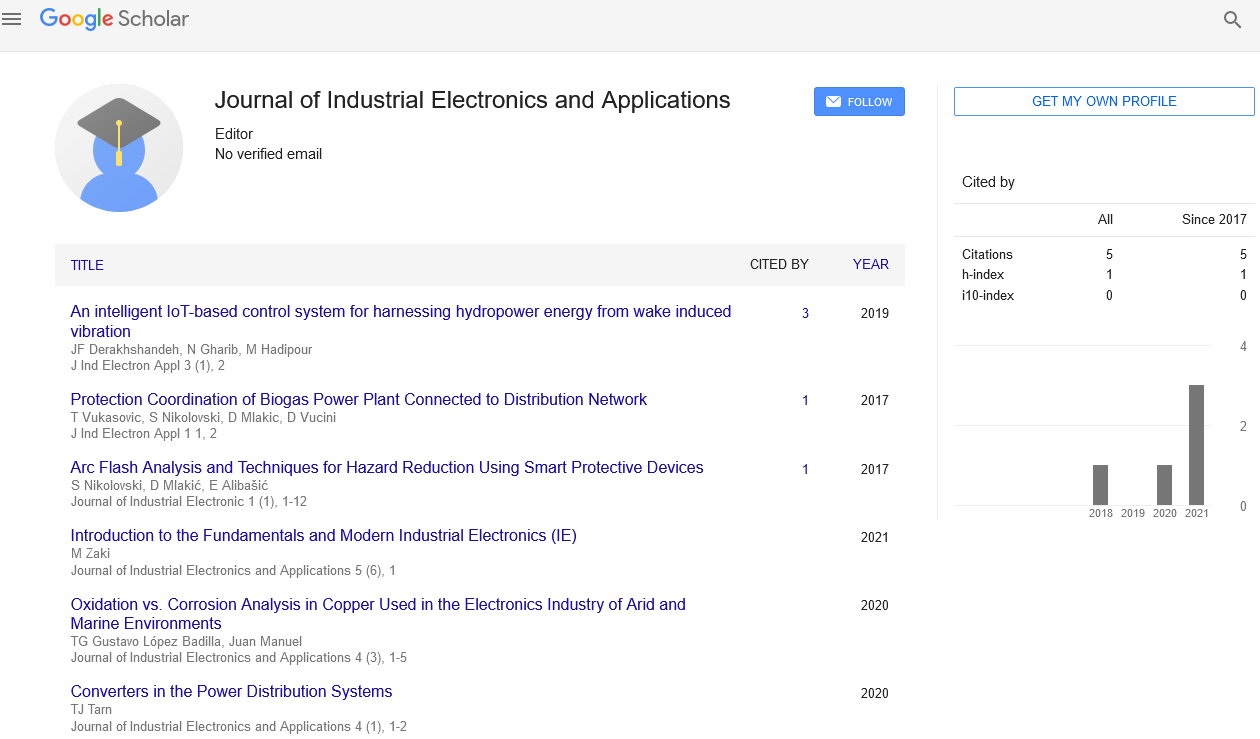Perspective, J Ind Electron Appl Vol: 7 Issue: 2
Human-Friendly AI: The XAI Revolution in Industries
Huang Jiahao*
1Department of Industrial and Systems Engineering, The Hong Kong Polytechnic University, Hung Hom, Hong Kong
*Corresponding Author: Huang Jiahao,
Department of Industrial and Systems
Engineering, The Hong Kong Polytechnic University, Hung Hom, Hong Kong
E-mail: gq.jiaho @polyu.edu.hk
Received date: 29 May, 2023, Manuscript No. JIEA-23-107949;
Editor assigned date: 31 May, 2023, PreQC No. JIEA-23-107949 (PQ);
Reviewed date: 15 June, 2023, QC No. JIEA-23-107949;
Revised date: 22 June, 2023, Manuscript No. JIEA-23-107949 (R);
Published date: 29 June, 2023, DOI: 10.4172/JIEA.1000025.
Citation: Jiahao H (2023) Human-Friendly AI: The XAI Revolution in Industries. J Ind Electron Appl 7:2.
Abstract
Description
Explainable Artificial Intelligence (XAI) is revolutionizing the adoption of AI technologies across industries by addressing the critical challenge of transparency and interpretability. As AI continues to advance and becomes more prevalent in various applications, the ability to understand the reasoning behind AI-driven decisions becomes paramount. XAI techniques provide clear and humaninterpretable explanations for AI models, fostering trust, accountability, and ethical use of AI. This article explore the diverse applications of XAI in industries, where the synergy of human understanding and AI-driven insights is transforming decision-making, enhancing safety, and opening new frontiers.
Healthcare
In the healthcare industry, XAI plays a pivotal role in ensuring the responsible deployment of AI models for medical diagnosis and treatment. Clinicians and patients require confidence in AI-driven diagnoses. XAI techniques provide comprehensible explanations for AI-generated medical insights, enabling medical professionals to validate and trust the AI system's recommendations. This not only enhances the accuracy of diagnoses but also empowers medical experts to make informed decisions, leading to improved patient outcomes.
Finance
In the finance industry, AI algorithms are extensively used for tasks such as credit scoring, risk assessment, and fraud detection. The ability to explain the rationale behind these AI decisions is vital for regulatory compliance and customer trust. XAI techniques enable financial institutions to provide customers with transparent explanations for credit approvals or rejections. Additionally, XAI helps auditors and regulators understand the logic driving AI-based decisions, ensuring compliance with industry standards and regulations.
Autonomous vehicles
The deployment of AI in autonomous vehicles raises concerns regarding safety and trust. XAI is instrumental in addressing these concerns by making AI-driven decisions interpretable to human operators and passengers. By providing explanations for route planning, obstacle detection, and collision avoidance, XAI instills confidence in the safety and reliability of autonomous vehicles, accelerating their acceptance and widespread adoption.
Manufacturing
In the manufacturing industry, AI and automation have streamlined processes, optimized production, and reduced downtime. XAI enhances the collaboration between AI-driven systems and human operators. By explaining AI recommendations for process optimization or equipment maintenance, XAI fosters human-AI teamwork, where operators can make well-informed decisions based on AI insights, leading to increased productivity and efficiency.
Legal and compliance
In legal settings, AI algorithms are used for tasks such as contract analysis, e-discovery, and case prediction. XAI is important for ensuring transparency and fairness in legal proceedings. Lawyers and judges require human-understandable explanations for AI-generated evidence and predictions to ensure a just and equitable legal process. XAI empowers legal professionals to verify the logic behind AI findings, promoting a more transparent and accountable legal system.
Customer service
In customer service applications, AI-powered chat bots and virtual assistants interact with customers to provide support and answer queries. XAI helps enhance the customer experience by making the chat-bot's responses more transparent. When customers receive clear explanations for AI-driven responses, they feel more confident in the accuracy and reliability of the information provided, improving customer satisfaction and loyalty.
Conclusion
Explainable Artificial Intelligence (XAI) is bridging the gap between AI and human understanding, revolutionizing decisionmaking processes across industries. By providing human-interpretable explanations for AI-driven insights, XAI fosters trust, accountability, and ethical use of AI technologies. In healthcare, finance, autonomous vehicles, manufacturing, legal proceedings, and customer service, the synergy between human intelligence and AI-driven capabilities is transforming industries. As the adoption of AI continues to grow, XAI will play an increasingly significant role in ensuring that AI is leveraged responsibly and ethically. Transparent and interpretable AI models will empower humans to collaborate more effectively with AI systems, unlocking the full potential of AI technologies to address complex challenges and build a brighter and more innovative future for industries worldwide.
 Spanish
Spanish  Chinese
Chinese  Russian
Russian  German
German  French
French  Japanese
Japanese  Portuguese
Portuguese  Hindi
Hindi 